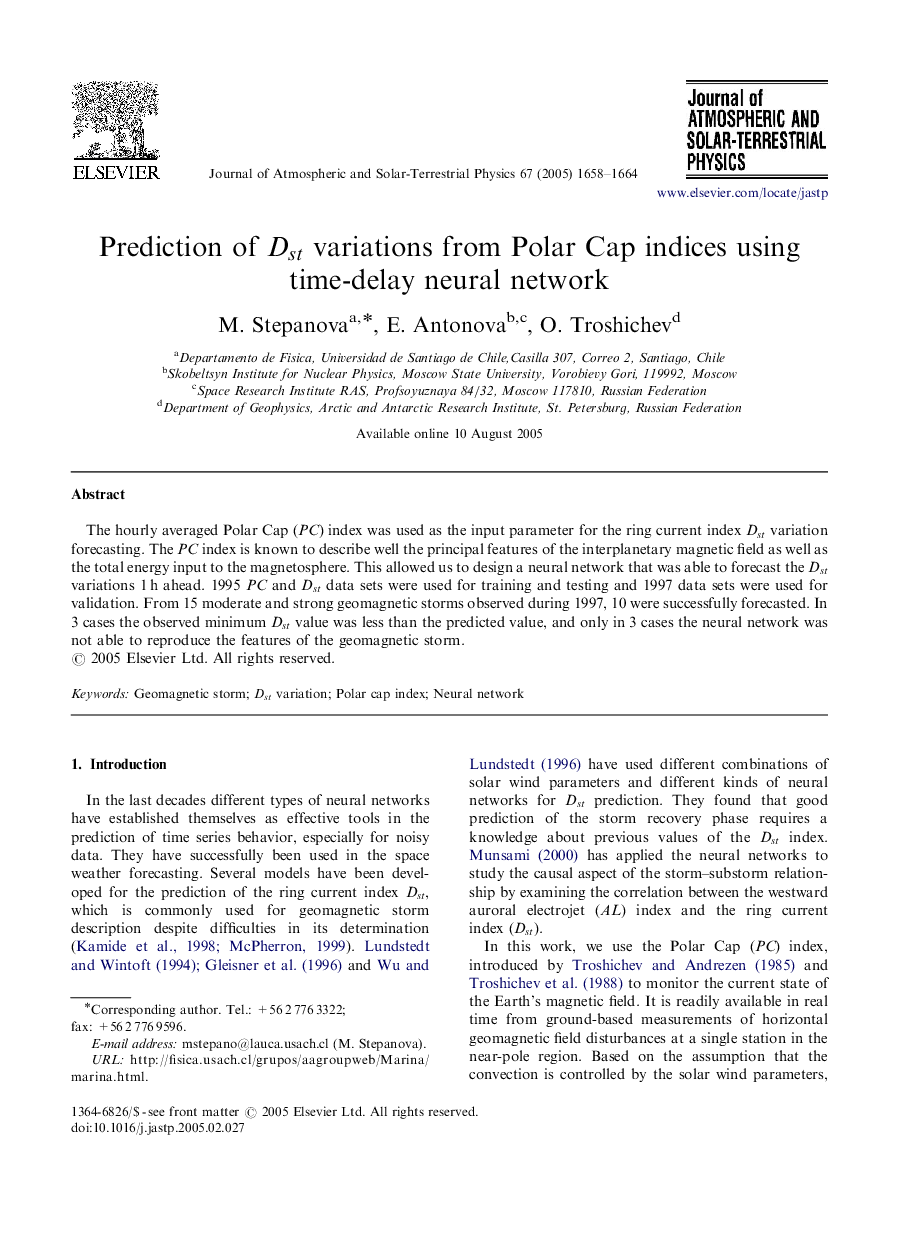| Article ID | Journal | Published Year | Pages | File Type |
|---|---|---|---|---|
| 9827664 | Journal of Atmospheric and Solar-Terrestrial Physics | 2005 | 7 Pages |
Abstract
The hourly averaged Polar Cap (PC) index was used as the input parameter for the ring current index Dst variation forecasting. The PC index is known to describe well the principal features of the interplanetary magnetic field as well as the total energy input to the magnetosphere. This allowed us to design a neural network that was able to forecast the Dst variations 1Â h ahead. 1995 PC and Dst data sets were used for training and testing and 1997 data sets were used for validation. From 15 moderate and strong geomagnetic storms observed during 1997, 10 were successfully forecasted. In 3 cases the observed minimum Dst value was less than the predicted value, and only in 3 cases the neural network was not able to reproduce the features of the geomagnetic storm.
Keywords
Related Topics
Physical Sciences and Engineering
Earth and Planetary Sciences
Geophysics
Authors
M. Stepanova, E. Antonova, O. Troshichev,
